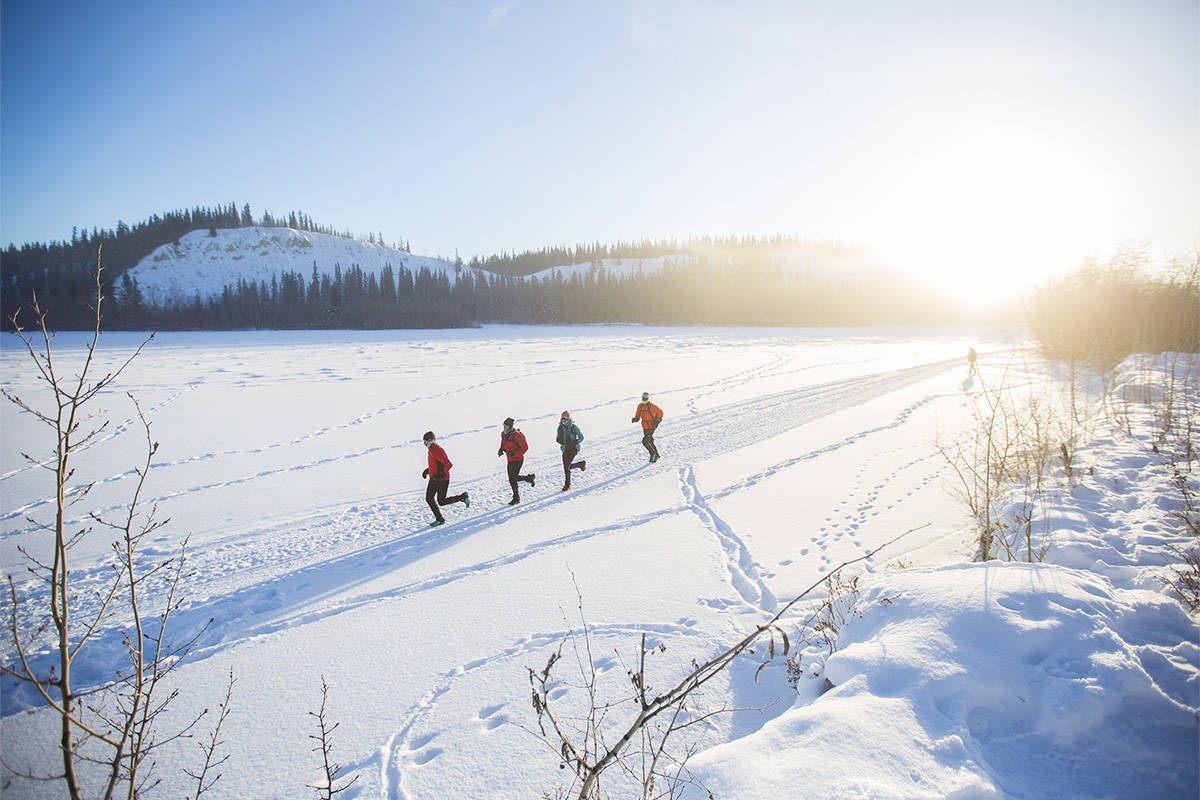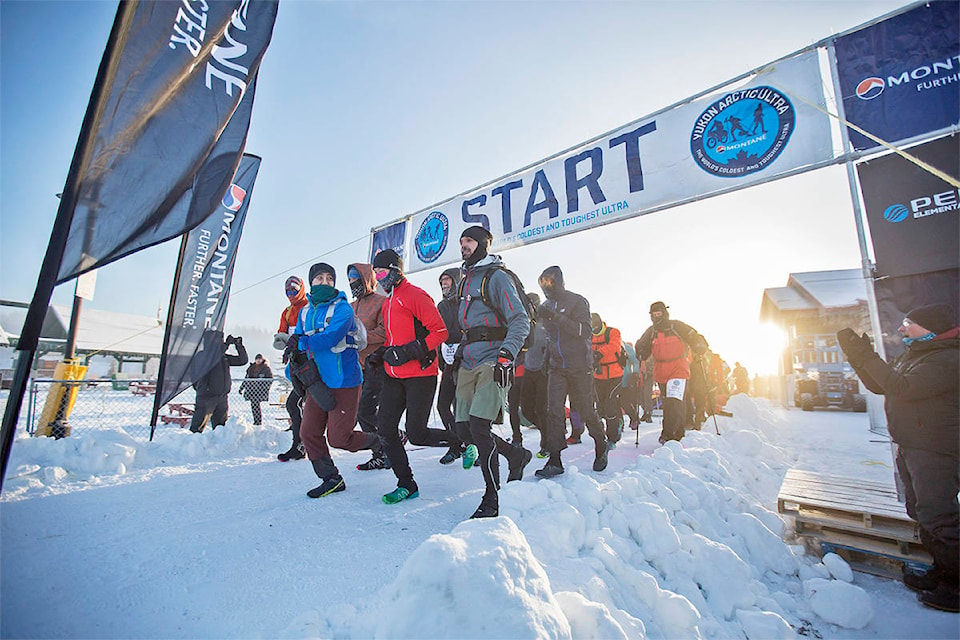Ten kilometres in, I realized everything I’d brought to drink was frozen - the electrolyte-spiked water in the bladder on my back; the Bengal Spice tea in the 1.5-litre thermos I was carrying. Even the finish-line scotch had turned to slush.
Running the marathon distance of the Montane Yukon Arctic Ultra, I was literally walking on water (the course snakes along the frozen Yukon and Takhini rivers), which meant it was a case of water, water everywhere and not a drop to drink.
Fortunately, I was running with my friend Blair, whose thermos hadn’t frozen, so he shared his tea. It seemed like a fair trade, considering he was the one who convinced me to run a marathon on a day when the temperature was -37C.
If it hadn’t been for Blair, I never would have had anything to do with the Ultra, especially after 2018, when temperatures dropped to -40C and some ultra runners lost fingers, toes and even feet, and especially when this was the kind of race that seemed to treat the marathon as an afterthought. (There’s not a single aid station on the course, compared to the half dozen or more offered by your average marathon.)
However, Blair and I are the kind of running buddies who amp each other up over races, and back in the heat of summer, when winter still seemed like an impossibility and we were high on the success of having finished a 50-mile ultra each, something as “simple” as a chilly 42 km seemed like a cakewalk. (I do realize how ridiculous this sounds. Regularly running long distances makes you … not normal.)
And honestly, the frigid weather was part of its charm. We’d run insane distances and we’d run in the cold, but we hadn’t run insane distances in the cold. The combination of extremes was what made it appealing.
We committed to sticking together, for safety, and spent the weeks before the race obsessing over weather predictions that were too early to count on. We texted daily as the forecast dropped from -6C to -18C to -22C. Blair said his drop-out temperature was -25C plus windchill. I said mine was -38C, maybe colder if there was no wind.
The day before the race, the app on my phone suggested a low of -25C even though it was already -35C, and only getting colder overnight. Blair texted me.
So, I am putting you on notice that I am still not 100 per cent on board.
But he was. In the morning, even with temperatures around -37C, he said he was in. I found him in the crowd of down jackets and neoprene at Shipyards Park, wearing neon-blue race tape on his face. He looked like a skeptical Ninja Turtle as he told me that just because he was starting didn’t mean he was committed to finishing.
He was though. We were cold for the first 7 km, but after messing around with layers for a bit, we were toasty. We made a plan to stop every 10 km to drink tea and eat snacks (brownies and homemade power balls). Otherwise, we just kept moving.
The course for the marathon distance had been packed flat a day earlier by the dogs of the Yukon Quest (here and there we passed brightly coloured dog booties, but had been told by the race director not to pick them up because wolves had once followed an ultra runner who started collecting them), so we didn’t even have to think about what our feet were doing. We just talked about where the next race was going to be and we admired the smooth white bowls of the cliffs along the river – a sight you don’t often get to see from the water in winter.
As the runners spread out, it seemed like it was just the two of us. I thought about how much less enjoyable the race would have been alone, especially considering my water situation. My favourite part of running extreme distances is seeing people I know. Whether you’re running with them or running past them or running into them at aid stations, seeing a familiar face is like seeing someone you went to war with.
That’s why the halfway point was the most fun part of the whole race. In the absence of an actual aid station, Blair’s wife and my boyfriend set one up for us, with coffee and bacon and a bowl of noodles. We rolled in like a snotty, snowy hurricane, dumping our packs out on the ground as though we were about to host a garage sale. There were drinks and food and knives and fire starters and dry doubles of everything we were wearing all over the place. Hell, between the two of us, we had a not insignificant bar.
As we ate, Blair’s wife screamed out a countdown so we knew how long we were taking. My boyfriend zipped up my jacket and tried to force an emergency McMuffin on me for the road. We were a gong show of excitement as solo runners moved quietly in and out of the checkpoint. We created the kind of spectacle you’d expect from runners leading a race with a massive purse, not from a couple jokers in seventh place who were running for the reward of a swig of frozen scotch.
So it was absurd, but it was also the best part of the day, and it kept us cracking up for the rest of the race, which was key, because everyone started to tire at the 30 km mark.
That’s when we passed a few runners who had been ahead of us all day, one of whom was barely moving. Talk turned from where we wanted to run later in the week, to what hurt right now (Blair’s ankle and my hamstrings).
At Muktuk, the end point for marathoners, we went to a bit of a mental dark place when we had to pass the finish line to complete an unmarked 6 km loop that actually ended up being a 10 km loop, but we eventually made it to the end. There, the race photographer recognized us as the only runners who’d stayed together the whole time.
“They even took pee breaks together!” he told everyone at the finish line.
That was surprising to me. I think the race would have been satisfying even if we had run it alone, but our plan to stick together for safety reasons ended up making it more than satisfying for other reasons.
There’s something special about running long distances, but when you do it with a partner, especially in extreme conditions, it makes you friends of a different kind. Maybe the kind you can convince to do 100 miles with you next year, once you’ve figure out how to keep your tea from freezing.
Contact Amy Kenny at editor@yukon-news.com

